Land reform - introduction
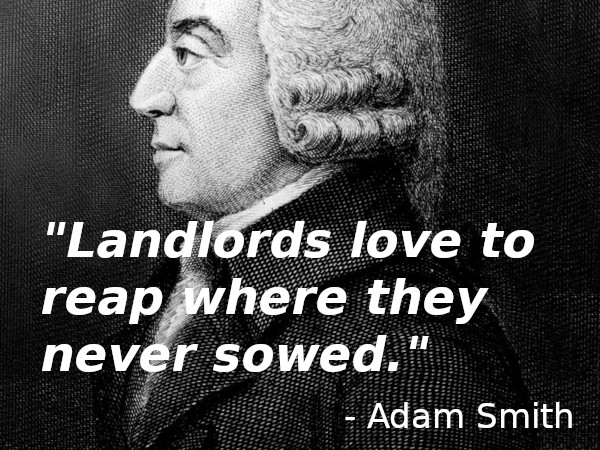
“Access to land is not simply a threat to landowning élites — it is a threat to the religion of unlimited economic growth and the power structure that depends upon it.” – from the manifesto of The Land Magazine
Contents
What is land reform?
The current situation
In the 20th century there was a massive transfer of people from the countryside to cities. It happened all over the world, and now for the first time in human history the urban population is larger than the rural population. The transfer has meant the loss of small farms and the rural skills that go with them – blacksmithing, basketmaking, natural building, animal husbandry, spinning, thatching, scything, leatherwork, herbal medicines etc. They’ve been replaced by industrial agriculture and urban, corporate jobs that suck money out of local communities to pay distant shareholders. In the West, the countryside is becoming a commuter / holiday home / retirement belt. Ordinary people are being kept off the land, because so few people own so much of it, and because the planning system prevents people from building a home on a few acres and becoming independent of the corporate system. It also promotes large farms at the expense of smallholders – for example, to be able to put up agricultural buildings without planning permission, you need to farm at least 5 hectares.

Land is the ultimate zero-sum game. If some people have too much, others can’t have any. Ted Turner, for example, has 2 million acres. We think that’s too much.
Britain is second (behind Brazil) when it comes to concentration of land ownership – over 70% of the land (and all the farmland) is owned by less than 1% of the population, who get taxpayers’ money to maintain it. Scotland is worst of all, with 432 families owning half of all non-public land – but it’s the same problem in Europe and the rest of the world. Millions of small farmers are losing their land in Asia, Africa and Latin America (Oxfam say that 227 million hectares of farmland in developing countries have been appropriated by international investors in the first decade of this century). 1000 hectares of land in Africa or Asia could support 400 smallholdings of 2.5 hectares each, which will produce more food and employ more people than if it were one large, mechanised 1000-acre farm. But investors are not interested in employment or food production, they’re interested in rent; and they can get more rent from a 1000-acre farm employing 2 or 3 people than they can from 400 smallholdings – because the people on the smallholdings need to use some of the produce of the land to feed, house and maintain themselves. Of course if they’re removed from the land they still need to feed, house and maintain themselves – but they are no longer able to do that from the land, and large-scale, chemical, mechanised agriculture doesn’t produce as much food per hectare. None of this interests investors however – and the World Bank happily encourages land grabs and large-scale, mechanised agriculture.
Back in Europe and North America, giant supermarkets continue to build huge out-of-town stores. If local residents resist, they will either wait a few years and re-submit the same application, or change it slightly and re-submit immediately. They have the resources to keep applying indefinitely. But if you want to build a natural home and have a sustainable livelihood in the countryside, you have to be prepared for a battle that can last years, to produce endless reports and to climb a huge learning curve as regards the complexities of the planning system. You probably have to be independently wealthy so that you don’t have to work during this time. It defeats most people. Meanwhile, industrial agriculture producing food for supermarkets is poisoning and eroding the soil. This large-scale food production is completely inefficient. In 2013, the UN reported that globally, a third of all food produced never gets eaten. This is largely to do with supermarkets’ over-zealous cosmetic standards, an obsession with sell-by dates, supply chains that are too long and crops abandoned in fields because of fluctuations in global markets. This means that we could feed the world on two-thirds of the amount of land we currently use. But we can only do that with a system of small producers supplying local markets. And yet, as we write, ordinary people are prevented from living outside development zones because they might spoil the countryside. It doesn’t make sense.

Laird: “You’re trespassing on my land”,
Poacher: “Why is it your land?”
Laird: “Because it was my father’s”.
Poacher: “How did he get it?”
Laird: “He inherited it from his father, and so on back to the first Laird”
Poacher: “And how did he get it?”
Laird: “He fought for it”
Poacher: “Well then, I’ll fight you for it”.
History
In England, the first thing that William the Conqueror did after his victory in 1066 was to claim all the land for the crown. Huge areas were appropriated (which involved the killing of hundreds of thousands of Saxons) and given to his barons as the first feudal estates. Those huge duchies still exist, and many families are proud of their link with this bloody land grab. There was enough common land, however, for peasants to graze their animals, hunt, collect firewood etc. From the 14th to the 19th century, this common land was enclosed as big landowners grabbed more land and put fences and hedges around it to keep peasants off; and the Black Act of 1723 made poaching on enclosed land a hanging offence. There were various revolts against this trend (including the Levellers and the Diggers) that didn’t end well.
In the latter half of the 18th century, 7 million acres of common land were privatised by acts of parliament, and roughly the same amount was enclosed illegally. Peasants were needed to work in the new factories – so they had to be sucked out of the countryside and into the slums, most brutally during the Highland Clearances. Meanwhile, colonialism was introducing the concept of private land ownership to many parts of the world that had never known it. In the US, small farmers became sharecroppers in the 19th century, then left the land altogether after the dust bowl of the 1930s, and US farms became truly enormous. Small farmers fared no better in ‘communist’ countries, with peasants facing brutal repression under Stalin and Mao. In India, the Green Revolution in the 1960s industrialised agriculture and delivered millions of ex-smallholders to urban slums.

If you think this way of ‘farming’ is healthy for ecology or for people, you’ll love the Green Revolution.
Back in the UK, the Plotlands movement that allowed Londoners to escape to the countryside after the war and build a shack/home on a small plot of land, was one of the things that scared the middle and landowning classes into thinking that the working class might colonise the countryside, and the 1947 Town and Country Planning Act was introduced to prevent the urbanisation of the countryside. This was a good idea in the main – to stop the ‘urban octopus’ from spreading over the entire countryside. So now there is ‘development’ land, where the building of homes is allowed, but it’s expensive, and quickly snapped up by big developers; and there is ‘open countryside’, where land is much cheaper, but you can’t build a home on it. So, for example, smallholders with, say, 5 acres in open countryside, can’t build a natural home on their land so that they can be close to their animals and crops – they would have to buy or rent an expensive, bricks and mortar house in a nearby village and commute to and from the land. People who want to live in a low-impact way find themselves in a Catch 22 situation. Either they can afford land that they’re not allowed to live on, or they’re allowed to live on land that they can’t afford.
How it could be
There are several ways that governments could help to distribute land more fairly. For example, after World War 1 in Eastern Europe, including Finland, a cap was put on the amount of land an individual or family could possess (usually between 20 and 500 hectares). In Scotland today, funding and guidance is being provided to help increase community ownership of land; and a land value tax has been proposed since the 19th century, to make the ownership of vast areas of land less financially attractive.
What we’re going to focus on are relatively small changes to the planning system that would allow smallholders and ‘downshifters’ to build eco-homes in areas in which conventional development is not permitted.
Allowing smallholders to build homes
We advocate national, criteria-based planning policies that allow smallholders to live on their smallholdings in the open countryside. We think that only people who adhere to strict eco-criteria should be considered – we’re not suggesting that we relax the planning system to allow more second homes and supermarkets. The criteria would cover building size, siting and materials, utilities, land-use, lifestyle/eco-footprint, tree-planting, public access and traffic.
Here are 15 criteria suggested by The Land is Ours. But they could be even more specific – for example, they could stipulate that projects will be off-grid and with no fossil-fuel generators for energy, or that they will be off the mains water and sewerage systems.
We also believe that permission should only be granted in the open countryside to those willing and able to produce food, rather than to people who’ve dropped out of the rat race after having made money from it, then bought a few acres for limited ‘self-sufficiency’ or to allow the land to revert to wilderness. The criteria have to include food production. Not everyone can or wants to live like this, and so food has to be produced for everyone else – otherwise we’ll have to import more food, which isn’t sustainable.
The criteria could also apply to woodland – as long as there’s a need to live there (e.g. people producing charcoal, timber, firewood, coppice products etc.).

Supermarkets, identikit housing estates, motorways, pylons, all fine; self-built, natural homes like this, no. With today’s housing shortages, it doesn’t make sense.
Allowing ‘downshifters’ to build homes too
Away from the open countryside, there could be provision for people who want to ‘downsize’ – i.e. sell a property in the city and move to the countryside or a small town and build an eco-house with just enough land to grow some food for themselves, and to have a part-time job to bring in more income – maybe involving a rural craft skill. This kind of housing would be suited to land on the edge of existing settlements – close to facilities but outside the development zone, and therefore affordable. It would be for people without the skills, energy or desire to make their living from the land, and so they don’t need much of it, and they don’t need to take up agricultural dwellings, which is the only official way of doing it at the moment. There’s no provision for them in the planning system as it stands, and we think there should be – still criteria-based, as above, but without the requirement to farm the land. Homes could be clustered so that resources could be shared – like chainsaws, workshops, vans, mini-tractors or even horses. The homes could be owned and leased by a body such as a land trust or co-op, and any associated land could be rented to residents as and when they wanted to use it – for allotments or a few animals etc. The demand is there – lots of people want to move to the countryside but can’t afford it.
Low-impact self-build could be the (sustainable) solution.
New land-use class
But even with criteria-based planning guidance, applications can still be refused by the individual planners and planning inspectors involved. A new land-use class (say, ‘low-impact land’) could be introduced, between development land and open countryside. Any land could be sold as low-impact land. It would fetch a higher price than open countryside (but much less than development land), and development would be automatically permitted as long as the legally-binding eco-criteria associated with it are adhered to. If any land could be sold as low-impact land, it wouldn’t become scarce, and the price would remain affordable. There would be no way to apply to get around the associated criteria, which would mean that it would only be attractive to those prepared to live an extremely low-impact lifestyle anyway.
Incorporated bodies to ensure sustainability
Planners prefer dealing with incorporated bodies of some sort rather than with individuals – so a land trust / co-op may be a good idea. Planners also need to be sure that low-impact means low-impact in perpetuity. They don’t want a super-eco development to be a ‘Trojan Horse’ to allow suburbia to creep into the open countryside. At the moment, planning permission means planning permission – planners don’t have the means to ensure that the buildings don’t become high-impact in future. Planning conditions can be overturned and there can be applications for improvements, extensions etc. A trust or co-op with a serious environmental track-record would ensure that criteria / conditions are adhered to forever. It would be the opposite approach to most planning conditions, which are restrictions on people who, left to their own devices, would do something different. But low-impacters want restrictions, to stop people living in an environmentally-damaging way.
Planning agreements can be revoked, but we’d want them to be in perpetuity, and an incorporated body would ensure that. Simon Fairlie talks about using simplified planning zones (with a low-impact slant) as a test bed to see if it works, without creating a scary precedent for planners. There are lots of ways to do it, but to start, it may be best to set up land trusts or co-ops with the sole aim of obtaining and maintaining low-impact land, vetting applicants and policing criteria – and convincing planners that they’re serious organisations (see below). Different bodies could have different ways that they sell or rent land. Smallholders could rent if they have no money up front, or find it difficult to get a mortgage. Rents could be low but perpetual, so that a fund is built up to buy more land. As long as tenants abide by the ecological criteria, there will be security of tenure.

Members of Lammas co-op in Pembrokeshire meet in front of their community hub.
What are the benefits of land reform?
The problems of sustainable provision of food, housing and energy are, if not solved, at least reduced, depending on how many people take up the offer. Millions of people could potentially apply to live like this if they could be accommodated – and more will be inspired by people already doing it, to gain the skills to do it themselves. Smallholdings produce more food per acre than large farms, plus they can house and employ more people, and strengthen local economies. Below are more benefits:
Environmental
The criteria would protect ecology locally, and criteria around building size and materials, renewables, water saving etc. could help strengthen, by example, environmental standards for conventional developments; people in clusters of low-impact developments could share resources; the more people who live this way, the less we’ll need power stations, pylons, sewage farms, supermarkets, oil refineries, sweat shops etc.
Social
Allows people to live sustainably in the countryside if they want to, without hiding; helps get land into the hands of the many rather than the few; affordable housing; prevents land speculation.
Personal
People can be their own bosses, do satisfying, healthy, outdoor work, live in a beautiful setting, and most importantly, don’t have to be dragged into the mainstream economic hierarchy; no-one is your ‘superior’ if you have a patch of land – you have the means of feeding and housing yourself, and a grave; the current system wastes applicants’ time, when they could be producing food, and wastes planners’ time when they could be policing ecological criteria.
Economic
Strengthens local economies – otherwise the countryside is just for huge monoculture farms, second home owners and commuters; stops the waste of taxpayers’ money involved in paying planners to prevent people from living on their smallholdings; land prices will come down – at the moment, land is artificially restricted, which makes it expensive; land reform would mean that the availability of building land will be restricted by tightening the criteria rather than increasing the price – so planning permission will be granted to those prepared to live more sustainably, rather than those with more money.

In a pioneering community buyout in 1997, the people of the Isle of Eigg became the first tenants in Scotland to clear a Laird from his estate.
What can I do?
You can read more on the subject, and/or subscribe to The Land magazine. Then there are lots of initiatives out there – you could consider joining / helping them.
Projects
Two projects are noteworthy – both co-ops – the Lammas commmunity in Pembrokeshire and the Ecological Land Co-op (ELC), whose first site is Greenham Reach in Devon. Lammas broke new ground by using Wales’ One Planet Development policy (see below) to obtain planning permission for 9 homes on 5-acre plots in the open countryside, based on ecological criteria. The ELC has done the same in England, for 3 homes on Greenham Reach’s 22 acres. Both projects aim to replicate their success around the UK. Lammas members have also helped educate building inspectors that low-impact developments are different (for example, outdoor compost toilets have been allowed); and the ELC have produced Small is Successful, a report on the economic viability of holdings of 10 acres or less.
There have also been successful projects operating within the current system. For example, Hockerton Housing Project in Nottinghamshire was permitted outside the development zone by section 54A of the Town and Country Planning Act, which allows developments outside the zone due to ‘material conditions’ – which could include the extremely sustainable nature of the development. This route is possible within the English system, but takes a lot of time and experience. There are also lots of low-impact ‘hippie’ homes that have been given permission (usually retrospectively) outside the development zone – justified because they are agricultural or forestry dwellings, or because their occupants had been living there for years, undetected, without causing any problems.
Inspiring progress by the Ecological Land Co-op, 2020
One-planet development
One-planet development (OPD) is new planning guidance in Wales – part of TAN6 (Technical Advice Note 6) which states that if a new development can achieve a per person eco-footprint of 1.88 hectares (the global average) or below, then it should be allowed, even in the open countryside. A footprint of 1.88 hectares is very difficult to measure precisely, but it’s a step in the right direction. Applicants under OPD have to provide a detailed business plan to show how they will support themselves from the land and how they will abide by the eco-criteria. There have been several successful applications, but several refusals as well. The One Planet Council was set up at Lammas to help applicants through the process.
Other initiatives
In Scotland, the Land Reform Review Group has been set up to overhaul Scottish land ownership, and community buyouts from absentee landlords have been happening in Scotland for a while, as on the island of Eigg. La Via Campesina, an international peasants’ movement with over 250 million members, is now operating in the UK too. Here are more organisations trying to push things in the right direction – plus there are many community land trusts, intentional communities and individuals maintaining the connection between ordinary people and the land. Perhaps the best way to keep up to speed with new developments is by subscribing to the wonderful magazine, the Land.
Specialist(s)
Thanks to Shaun Chamberlin of the Ecological Land Co-operative for information.
The specialist(s) below will respond to queries on this topic. Please comment in the box at the bottom of the page.

Oli Rodker is a founder director and site developer for the Ecological Land Co-op. He’s also part of the core group of the Landworkers’ Alliance. Previously Oli co-founded Equinox Housing Co-op in Manchester and Landmatters Co-op, a 42-acre permaculture community in Devon. He is a director of Knott Wood Coppicers, a workers’ co-op specialising in woodland management and tree planting.

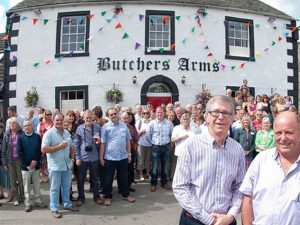

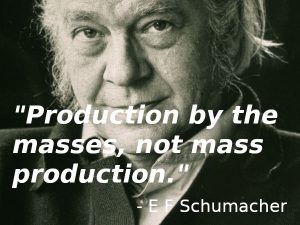




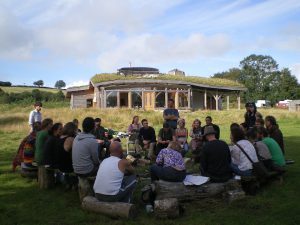


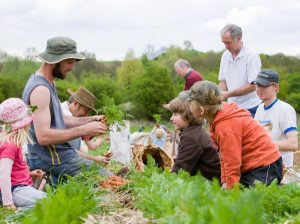
7 Comments
Thanks for compiling this article, I’ve found it really helpful. I want to work towards reforming planning regulations to make it easier to build intentional communities. Any idea which organisation is most focused on this that I could contact to get involved with? Thanks.
Chapter 7 – http://tlio.org.uk/chapter7/, plus check the blog of Dan the Plan – http://dantheplan.blogspot.co.uk/ and the websites of the organisations above, under ‘What’s already happening’.
Thanks
While I agree that more support for organisations like Lammas and ELC is important, I feel that a lot could be done to simplify the system for individuals and to enforce environmental conditions on planning permission. However, the real issue is that we will not have satisfactory access to land whilst we tolerate the rich.
I agree. I wouldn’t point at individuals though (and I don’t think you are) – I don’t think we should tolerate a system that allows wealth and therefore land ownership to concentrate so much.
I am offering a course on one planet development – anyone wishing to host it near them, please get in touch! http://www.lowimpact.org/venue-course-one-planet-development/
Brilliant article, well done to all concerned. OK it will be slow but at least a start has now been made and what a Start!!